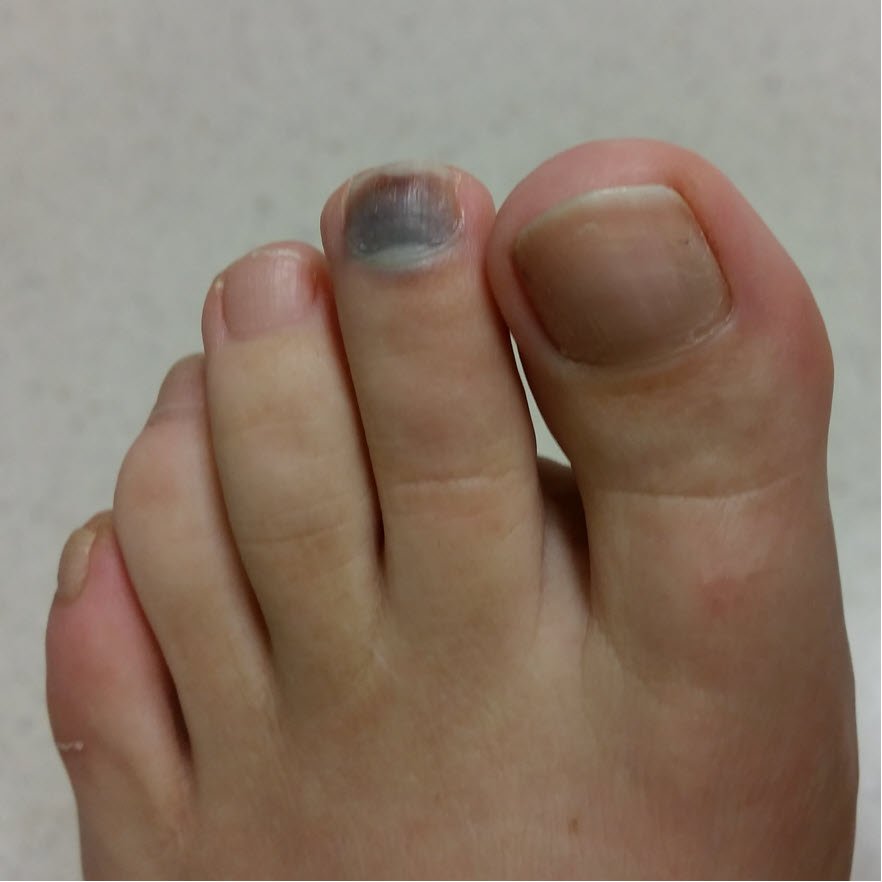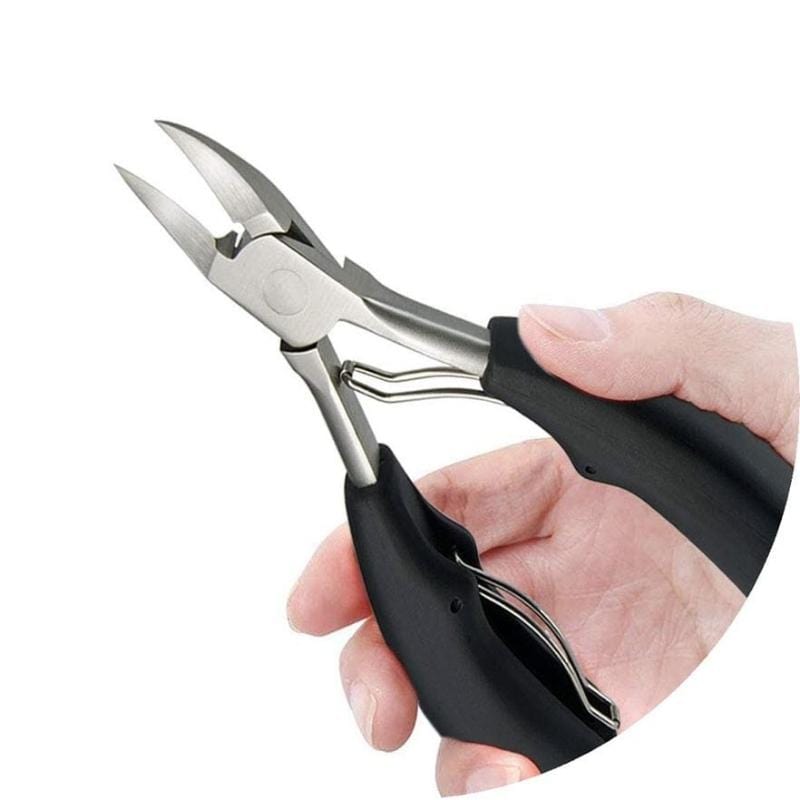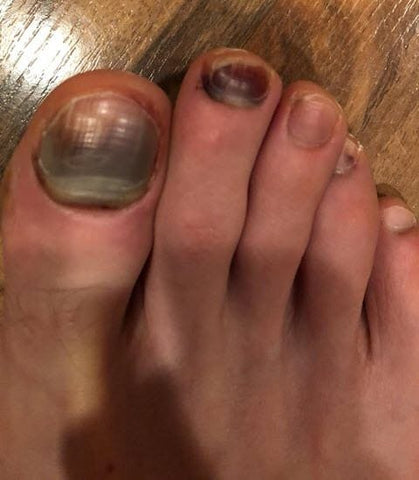
Two black toenails after running
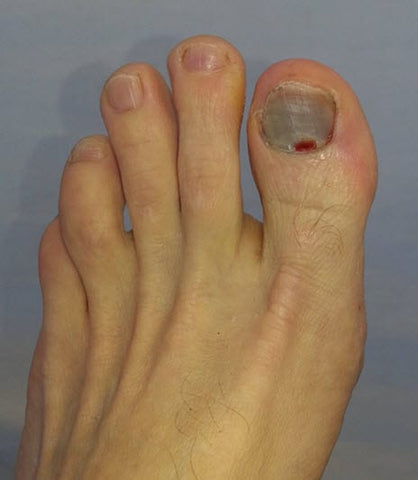
Black big toenail of a runner
How long do black toenails take to disappear?
You've basically got a blood blister under your toenail. Some of the blood will slowly reabsorb. Even if it does, there’s always some blood that sticks to the underside of the nail and stains it. So you have to wait for that part of the nail to grow out. That can be a slow process. If your black nail is right back at the quick, it could take 3-6 months for that discoloured nail to move forward and grow out.
Will my toenail fall off?
Not usually, but it depends on the extent of the injury to the nail area and how much blood accumulated under the nail.
This black nail (below) is 10 weeks old. It remained well-attached since the initial injury. You can see the new uninjured nail growing up behind it - pushing the old blackened nail forward as it grows. When I went to trim this nail, it was still relatively well-attached. It "snapped" off, painlessly, as I trimmed it - all quite normal. Compare the before and after.
What causes black toenails?
As we are a site that talks all about foot blisters, we’re going to concentrate on the kinds of black toenails that are closely associated with toenail blisters. They can have a slow onset – caused by what we call microtrauma. For example, multiple episodes of your toe hitting the end of your shoe, like if you’re running with your laces too loose, or you’re walking downhill. While it’s not painful at the start, the repetitive nature of this trauma, step after step, is enough to rupture a small blood vessel. Or there can be a sudden onset of subungual hematoma from an acute injury, like a stubbing injury, dropping something heavy on your toe or someone jumping on your toe.
But it’s important to keep in mind there are other causes of black nails, such as: fungal infections; melanoma and other forms of cancer; gangrene; and the complications of diabetes. It can be difficult to distinguish between these presentations yourself. If your black nail has popped up out of the blue without any injury, or your toenail has been discoloured for an extended period of time, see your doctor. Your doctor will ask the right questions and look at your medical history to find the answer.
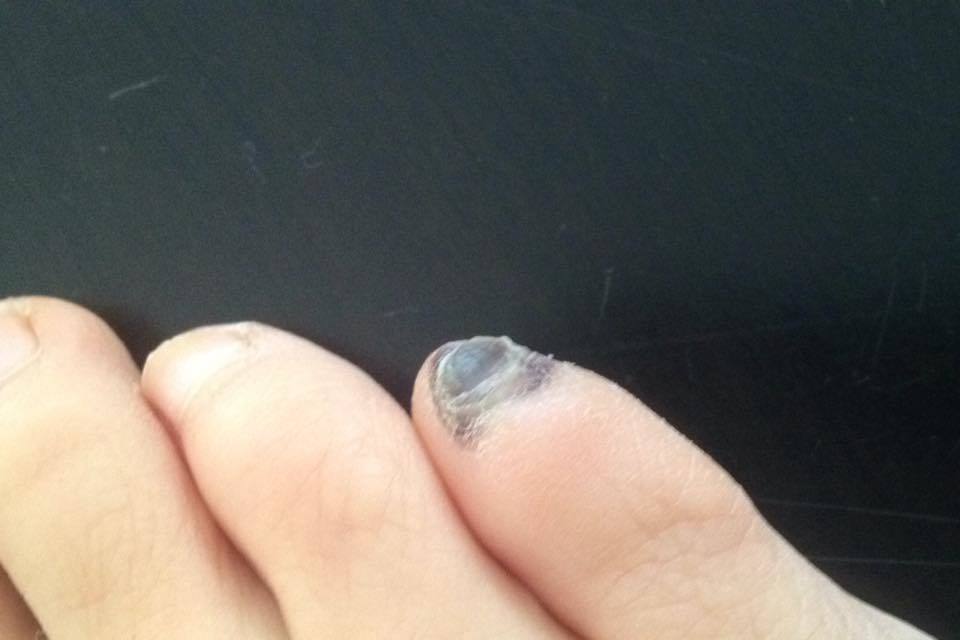
Black nail of little toe
Painful black toenail
The problem of bleeding under the toenail is the skin can’t bubble up like a blister – because the hardness of the nail won’t allow it. As blood fills the injured area, it has literally got nowhere to go. It’s stuck between a rock and a hard place (the toenail and the toe bone). The result is a lot of pressure and hence, a lot of pain.
Painless black toenail
Some black toenails are completely painless. There’s been a bit of bleeding under the nail, but not a sufficient quantity to pressurize the nerve endings. These are more like a bruise under the toenail. These do not need treating. Just leave them and slowly but surely, the black will move forward as the nail grow and one day, you’ll get to trim the last bit of black nail off.
It’s worth noting that a painful black toenail will usually become less painful over time, perhaps even painless. The body reabsorbs some of the blood via natural healing processes so there is less pressure to cause pain. But you may need to wait several days for this to happen. Often the pain of a black nail necessitates releasing the fluid.
Black toenail treatment - especially the painful ones
The easiest way to release the pressure is to drill the nail with a sterile hypodrermic needle. You can do this yourself – it’s actually quite easy and not as painful as it looks. Here’s a great video of this technique on a black thumbnail.
Just place the needle over the black nail and press gently as you twist. These needles are extremely sharp so even with light pressure, this twisting motion will get through the nail within a minute. And don’t worry about the needle injuring your toe. Because you’re pressing gently, you’ll feel the needle starting to give when you reach all the way through the nail. Once you see the first bit of blood release, twist a few more times carefully to give it a big enough hole for the blood to escape. You won’t believe the relief when that first bit of blood is released.
You can make another hole if you feel it needs it. Then just press gently on different parts of your nail and toe to help the majority of the blood come out. It’s not a race, this part doesn’t need to be painful at all and you don’t need to get all the blood out. When your toe is feeling a bit better, apply some antiseptic and a bandaid. As you walk around, more blood will come out. Change your bandaid when you see it start to become soiled.
If you don’t have the stomach for it, see your podiatrist or doctor and they’ll do it for you.
Either way, you’ll be so glad you did!
Oh, and there’s no point drilling a toenail more than a week after the injury occurred. At this point, the blood is too congealed (not liquid enough) to be expelled readily. This nail drilling procedure is best done within the first 3-4 days. If it's later than a week, best to see a podiatrist who will be able to thin the nail and clear any dried blood.
How to avoid black toenails
- Don’t wear shoes that are too small. You need the width of your thumb between the end of your longest toe (usually the second toe) and the end of your shoe’s upper.
- Don’t wear shoes that are too loose that allow your foot to slide forward and your toes hit the end. Use your laces to firmly hold your heel right to the back of the shoe, like this: https://youtu.be/LXjOLWgWq9k
- Don’t let your toenails get too long. Trim them. If they're thick, get a sharp set of toenail clippers like these (below) that make it easy to cut thick toenails
- Don’t leave your toenails rough at the ends. File them.
- Don’t drop things on your toes and don’t let people jump on your toes!
- If it’s your big toe, make sure you have adequate depth in the toebox of your shoe. If you feels there’s plenty of room, see a podiatrist because there are some situations where toenails can angle upwards. A podiatrist will advise you further on this.
- If it’s your smaller toes and they bend over, try a toeprop to hold your toes a bit straighter. You can get these from the chemist or you can get a podiatrist to make one for you, like this (https://youtu.be/lL4_E_DlCgc):
When a black toenail is more like a blister
If you get lucky, the bleeding under your nail will find a way to spread laterally to become more like a blood blister under your nail or near the nail. Of course, the blood is still contained under the skin, but skin is far easier to put a hole in than a toenail is. You can simply lance (pop) your blister and all the blood that’s under the nail will come out of this hole. Black toenails that become more like blisters under the nail are often less painful, because the pressure under the nail is much less. But to the naked eye, they often look worse - don't you agree!
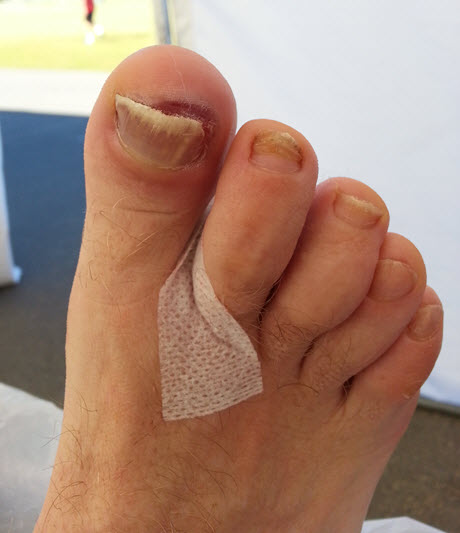
Blood blister under toenail
Here's a really good photo from Greg's Running Adventures showing a black nail (big toe), toenail blood blister (middle toe). I can't quite tell what's happening with the second toe - it's probably a bit of both (or it might just be a bit grubby?).
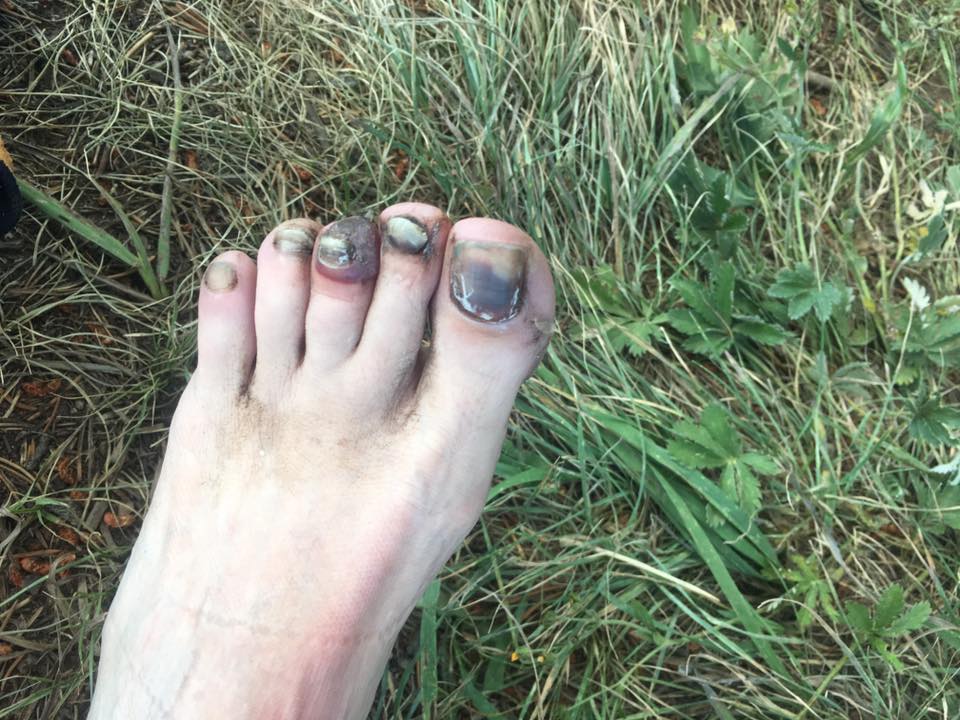
Black nail (big toe) and toenail blood blister (middle toe) - from Greg's Running Adventures
Got Thick Toenails?
If you've got very thick toenails and struggle to cut them, our Toenail Clippers For Thick Toenails are a must have!
